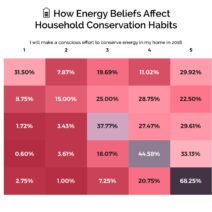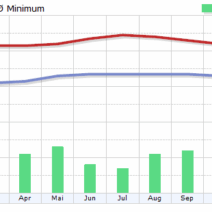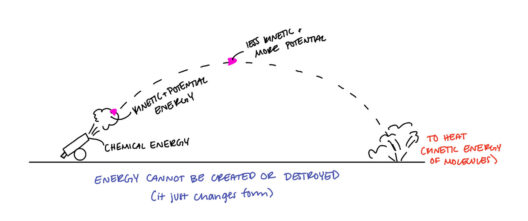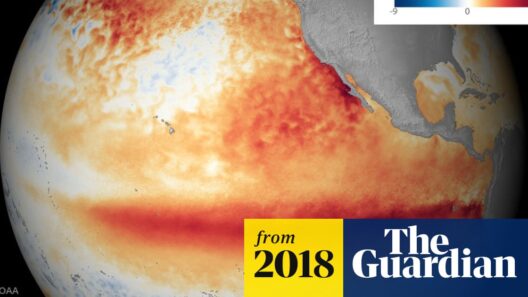In the grand tapestry of life, our daily habits serve as threads intricately woven into the fabric of the Earth’s climate. Each action, each decision is akin to a drop of water in a vast ocean. Individually, they may seem insignificant, yet collectively, they contribute to the rising tide of global warming that threatens our very existence.
Consider the metaphor of a pebble tossed into a serene pond. The ripples extend far beyond the initial impact, reaching shores that seem distant and unaffected. Similarly, the choices we make in our daily lives create reverberations through the intricate ecosystem of our planet. Every product we purchase, every bite we take, and every journey we embark upon holds weight in the overarching narrative of climate change.
To understand our impact, we must dissect everyday activities and mortify them under a magnifying glass. Our reliance on energy is perhaps the most palpable example. From the flick of a switch to the hum of appliances, electricity is the lifeblood that powers our contemporary existence. However, the sources of this energy often lay heavy footprints upon the Earth. Fossil fuels, predominantly used for electricity generation, release copious amounts of carbon dioxide, a primary greenhouse gas that ensnares heat in our atmosphere, similar to a blanket woven too tightly. This insidious warming contributes to unprecedented climatic disruptions.
Transportation is the next thread in this complex weave. Cars, trucks, and airplanes have revolutionized our mobility but come at a significant environmental cost. The combustion of gasoline and diesel emits a cocktail of pollutants, further exacerbating the greenhouse effect. Public transportation systems often present a more ecologically attuned alternative. By opting for buses, trains, or even bicycles, individuals can lessen their carbon footprints and contribute to a much-needed paradigm shift towards a sustainable transportation model.
Waste management also plays an essential role in the climate narrative. Our throwaway culture, characterized by single-use plastics and disposable items, is like a slow poison in the environment’s well-being. Landfills burgeon with refuse, decomposing waste releases methane—a potent greenhouse gas. Recycling and composting are not mere fads; they are imperative in reducing waste and conserving resources, akin to pruning a plant to encourage new growth.
Moreover, let us turn our gaze upon the realm of consumption, where our culinary habits evoke a significant impact on climate. The food we choose to consume is fraught with implications for our planet. Industrial agriculture often employs methods that are detrimental to soil health and biodiversity. Livestock farming, particularly, is a heavy emitter of greenhouse gases, responsible for considerable portions of methane released into the atmosphere. By embracing plant-based diets or even reducing meat consumption, individuals can forge a powerful statement in the symphony of climate action. The shift from plate to planet is a direct line of influence—what nourishes us should not come at the cost of our ecosystem’s vitality.
Equally crucial is the issue of water usage, often regarded with an alarming degree of negligence. Water scarcity is not a distant threat but a burgeoning crisis, exacerbated by climate change. Simple alterations, like reducing shower time or fixing leaks, can markedly diminish our water footprints. Furthermore, the way we treat our rivers, lakes, and aquifers is essential. Protecting these resources from pollution is vital for sustaining both human life and the myriad organisms that inhabit these aquatic ecosystems.
Education serves as the cornerstone for driving awareness about climate change. When individuals recognize the tangible impacts of their everyday choices, they are better equipped to make informed decisions. Volunteering for community clean-ups or advocating for sustainable policies can embolden collective action. Each initiative, however diminutive, has the potential to galvanize others, creating a cascading effect of environmental stewardship across communities.
Social media platforms have emerged as influential tools in the modern age. They harness the power of connectivity, enabling individuals to share knowledge, advocate for change, and inspire collective action. The digital age challenges us to transcend geographical boundaries and unify in purpose, reinforcing the notion that global warming knows no borders. A shared narrative promotes mutual understanding, bridging gaps between diverse populations similarly invested in protecting our planet.
Furthermore, it is imperative to recognize the role of corporate responsibility in the grand scheme of climate change. As consumers, we have the power to hold enterprises accountable for their impact on the environment. By supporting companies that prioritize sustainability, we reinforce the importance of ethical production and consumption. This financial power drives markets towards eco-friendly practices and encourages innovation in sustainable technologies.
In conclusion, the journey towards mitigating global warming is profoundly rooted in our daily habits. By appreciating the intricate relationships between our choices and environmental outcomes, we can effectively contribute to a more sustainable future. Each action matters—a mere flick of the light switch, a conscious decision in the grocery aisle, or even our transportation choices can spur ripples of change akin to the pebble in the pond. Let us adopt a mindset that recognizes the interconnectedness of our world, understanding that through collective responsibility, we can weave a tapestry that reflects a thriving, sustainable planet. We are custodians of the Earth, and it is our duty to safeguard its unparalleled beauty for generations to come.








